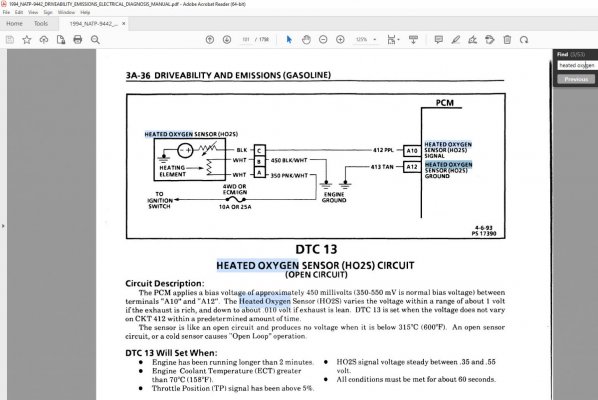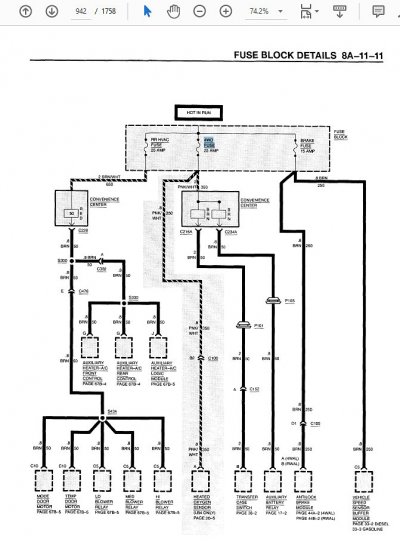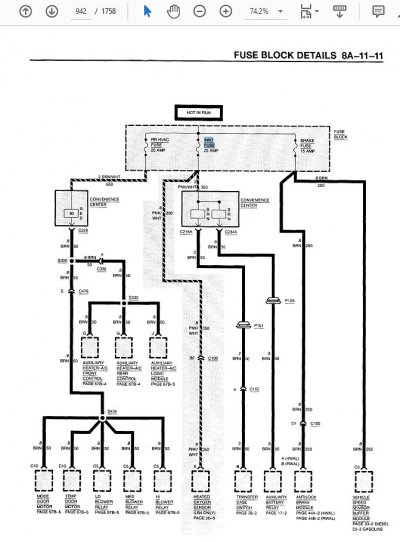I think I understand now!
So it was flashing fast for the first few minutes, then it slowed down, so that must mean it entered closed loop. It is at this point that the problem usually happens (though not always; it seems less common in warmer weather). The interesting thing I noticed is that it seemed to bounce between open and closed loop a few times (the light would flash slowly, then it would speed up for a bit, then slow down a bit). It seems to me that once it enters closed loop, it should stay in closed loop, yes?
Also, given that it seems to do the right things regarding warming up and switching to closed loop when it should, the temp sensor is probably fine, I would think?
cc333,
Sounds like you've got the hang of it. And your observation that when your computer transitions to Closed Loop and
the symptoms start to present is a pretty good hint that your O2 sensors are tired/no longer working
as they should.
NOTE: Elsewhere in the forum it's been discussed that even with live data, although we can prove
that an O2 sensor is bad, by the same token we can't always prove that they are good. In a
case like yours we have to rely upon other clues as to whether or not the O2 sensor(s) should be
replaced:
* Have you ever replaced them before? If so, what brand did you use?
* If you haven't replaced them, did the PO give you any receipts for the parts
he replaced prior to selling you the truck? If so, were the O2 sensor(s) replaced,
and how long ago?
* When you crawl underneath and look at the sensor(s), do they look like they
have been there since the truck rolled off of the Assembly Line? Note that most
owners were guilty of giving them a good leaving alone, as in the infamous
"If it ain't broke, don't fix it" mentality. :0)
The bottom line is that the O2 sensor lives in the harshest environment of all
(the business end in the hot exhaust stream, and other end underneath the
truck, with people fording high water, sandy beaches, mud bogs, etc. Meanwhile,
the sensor's job is to compare the quantity of oxygen in the exhaust stream against
the quantity of oxygen in the surrounding air.
And that they should be considered a wear item like a spark plug, for they never get
better with age & use. But we can't see what you see unless you post a photo.
But the good news is that single wire O2 sensors are very affordable, so unless
you are convinced that your O2 sensors are already fresh then you should seriously
consider swapping them out.
One last thing. You question about once the engine goes closed loop, it should stay in
closed loop? Ideally for your truck, yes. But owners of single wire O2 sensor trucks
that monitor the behavior have reported that their vehicles will fall out of Closed Loop
when the truck idles for a period of time. (Waiting at a long light, etc.)
On the other hand, in order to meet increasingly stringent emissions regulations,
newer versions of your truck upgraded from single wire O2 sensors to heated
three wire sensors, so that these trucks go closed loop sooner, and then
stay in Closed Loop for the duration of that trip.
Guess what? They retrofitted their trucks to the 3-wire sensors, and some
reported improved all-round driveability and improved fuel economy. Which
makes sense, for as mentioned earlier, with healthy O2 sensors your truck
will drive it's very best, give you the best possible MPG, and at the same time
pollute the least.
The bottom line is that they really are a tuneup item, but most owners wait until
the truck doesn't drive right, a normal tune up doesn't resolve the problem, and
only then are the O2 sensors given any thought.
If it was my truck and they look to be vintage, I'd swap them out in the interest
of science & see how much of an improvement they make.
Hope this helps.
Cheers --
Last edited:




